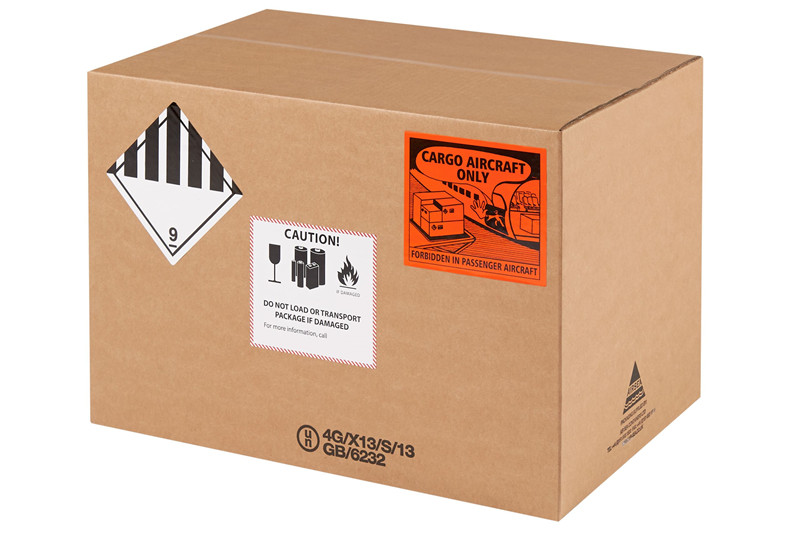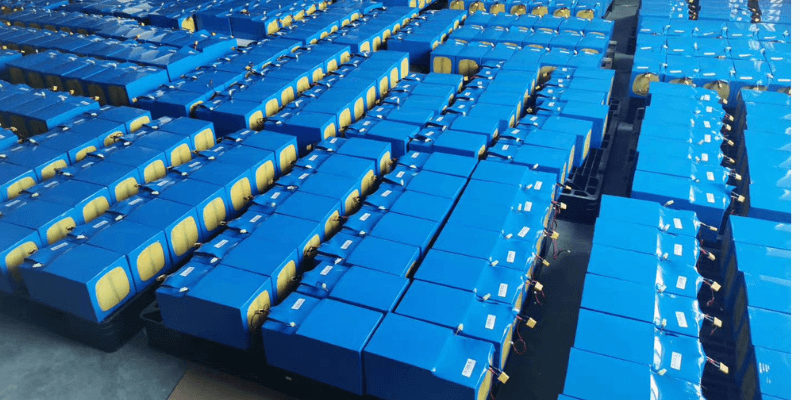الوجبات الجاهزة الرئيسية:
- يتطلب نقل بطاريات الليثيوم الالتزام باللوائح الصارمة بسبب قابليتها للاشتعال ، ومخاطر هارب الحراري ، وإمكانية الانفجار. يتم تكليف الامتثال من قبل العديد من الوكالات الوطنية والدولية.
بطاريات الليثيوم قوة أكثر الأجهزة ذات الصعوبة اليوم ، من المركبات إلى الهواتف المحمولة. تأتي هذه البطاريات بأحجام مختلفة ، وساعات وات ، والكيمياء ، والمجلدات.
تصميم الشركات المصنعة وشحنها كحزم مستقلة ، مثبتة مسبقًا في الأجهزة ، أو تعبئتها بالجهاز. بغض النظر عن القناة التي تستخدمها لشحن بطاريات الليثيوم ، يجب اتباع القيود الوطنية والدولية.
لماذا يتطلب نقل بطاريات الليثيوم لوائح صارمة؟
يتم تصنيف خلايا الليثيوم والبطاريات على أنها سلع خطيرة للنقل بسبب المخاطر المحتملة على النحو التالي:
- القابلية للاشتعال والتآكل بالكهرباء.
- الهروب الحراري الناتج عن ارتفاع درجة حرارة البطارية.
- حريق أو انفجار ناجم عن دوائر قصيرة.
لوائح شحن بطاريات الليثيوم
يخضع نقل بطاريات الليثيوم لمجموعة صارمة من اللوائح. تشمل هذه اللوائح، على سبيل المثال لا الحصر، ما يلي:
- وزارة النقل الأمريكية (نقطة) لوائح المواد الخطرة، التي تذكر متطلبات التصنيف والتعبئة ووضع العلامات والنقل لبطاريات الليثيوم.
- المنظمة البحرية الدولية (المنظمة البحرية الدولية) رمز البضائع الخطرة، يركز في المقام الأول على النقل البحري لبطاريات الليثيوم.
- منظمة الطيران المدني الدولي (منظمة الطيران المدني الدولي) تعليمات فنية توفر إرشادات السلامة التفصيلية للنقل الجوي لبطاريات الليثيوم.
متطلبات التعبئة والتغليف لبطاريات الليثيوم
فيما يلي متطلبات التغليف للحفاظ على سلامة بطاريات الليثيوم والامتثال للوائح:
- قم بتسميته بشكل صحيح: تحتوي كل عبوة على بطاريات أو خلايا الليثيوم، سواء كانت مستقلة أو مدمجة في الأجهزة، ويجب أن تحمل ملصقًا يوضح مصدر الطاقة الخاص بها وتعرض علامة الخطر.
- كتلة الدائرة القصيرة: يجب أن تمنع عبوتك حدوث دوائر قصيرة من التوصيلات الكهربائية.
- لا توجد عيوب مسموح بها: لا يُسمح أبدًا بالبطاريات المعيبة أو التالفة أثناء السفر.
- قواعد إعادة التدوير: البطاريات التي يتم إرجاعها إلى الشركة المصنعة لإعادة تدويرها لا يمكن أن تطير دون موافقة شركة الطيران.
- مراقبو الوزن: إذا كان وزن بطارية الليثيوم الخاصة بك يزيد عن 35 كجم، فإن ذلك يتطلب موافقة السلطات الوطنية. يُسمح بأحمال أخف تصل إلى 35 كجم لأنواع معينة.
- مسائل الحجم: تحتوي بطاريات الليثيوم أيون كبيرة الحجم التي تقل طاقتها عن 100 وات في الساعة على 10 كجم كحد أقصى لكل عبوة، بينما تقتصر الدفعات منخفضة الحجم على 5 كجم.
- لا توجد طائرات ركاب بالنسبة للبعض: يُحظر استخدام بطاريات وخلايا الليثيوم الموسومة بالبضائع في طائرات الركاب. عند شحنها كبضائع، يجب أن تكون رسومها 30% أو أقل.

نصائح لشحن بطاريات الليثيوم
لنقل بطاريات الليثيوم بأمان، فكر في تنفيذ أفضل الممارسات التالية:
- اعتماد فريقك: التأكد من أن جميع موظفي النقل قد تلقوا التدريب المناسب ويحملون الشهادات ذات الصلة.
- شريك مع شركات النقل ذات السمعة الطيبة: التعاون مع مقدمي الخدمات السريعة ذوي السمعة الطيبة، والتأكد من أنهم يفهمون اللوائح ويلتزمون بها.
- ابق على اطلاع دائم باللوائح: قم بمراجعة وتحديث عمليات النقل بانتظام لتلبية أحدث المتطلبات التنظيمية.
- إعداد الوثائق الأساسية: قم بإعداد الوثائق والشهادات اللازمة لنقل بطاريات الليثيوم، مثل عقد البضائع الخطرة، وصحيفة بيانات سلامة المواد (MSDS)، و UN38.3 شهادة.
عواقب عدم الامتثال
قد يؤدي عدم الامتثال للوائح نقل بطارية الليثيوم إلى العواقب التالية:
- قد يتم رفض نقل البضائع.
- قد يكون هناك تعرض لغرامات عالية والتزامات قانونية.
- قد تتضرر السمعة التجارية، وقد يتم حظر أنشطة النقل المستقبلية.
- والأخطر من ذلك أنه يمكن أن يؤدي إلى حوادث تتعلق بالسلامة تؤدي إلى إصابات شخصية وأضرار في الممتلكات.
خاتمة
يتطلب نقل بطاريات الليثيوم أسلوبًا متطورًا ومنظمًا بدقة. لضمان السلامة والالتزام بالمعايير، يجب أن تكون جميع الأطراف المشاركة في شحن بطاريات الليثيوم على دراية باللوائح ذات الصلة ومتوافقة معها.
ومن خلال اتباع أفضل الممارسات والحفاظ على الرقابة الصارمة، يمكن التخفيف من مخاطر عملية النقل، مما يحمي سلامة الإنسان والبيئة.

